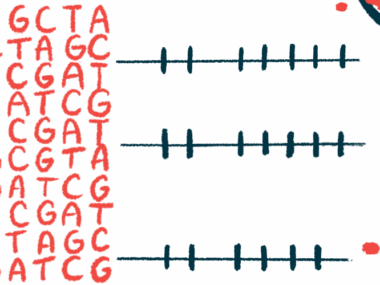NIH awards The Jackson Laboratory over $22M for gene editing research
Project aiming for safe, effective therapies for SMA, other diseases
Written by |

Scientists at The Jackson Laboratory — a U.S.-based biomedical research nonprofit — were granted $22.8 million by the National Institute of Neurological Disorders and Stroke (NINDS), part of the National Institutes of Health (NIH), for a novel method to develop gene editing therapies for neurological disorders, including spinal muscular atrophy (SMA).
The five-year project is part of the Somatic Cell Gene Editing Program (SCGE), which works to improve the efficacy and specificity of gene editing tools for non-reproductive cells, called somatic cells.
“There are many obstacles to developing safe, effective treatments for rare diseases — including small patient populations, high costs and regulatory barriers,” Cathleen Lutz, PhD, the leader of the research team, said in a press release.
“Our goal is to remove or move past the obstacles, bring a highly promising new therapy strategy to the clinic, and directly benefit individuals with these diseases,” added Lutz, also vice president of the Rare Disease Translational Center at The Jackson Laboratory, in Maine.
Research efforts aim to develop, improve gene editing tools
Genome editing, also known as gene editing, refers to a set of techniques that enable scientists to modify an organism’s DNA. These methods enable the addition, removal, or alteration of genetic material at specific positions within the genome. One widely recognized approach to genome editing is known as CRISPR.
Now, researchers from The Jackson Laboratory, known as JAX, and a multi-institute team of collaborators will use the NINDS grant with an aim to develop safe, effective therapies for neurological diseases and bring them to the clinic. The team expects to advance at least one candidate therapy through a successful investigational new drug application or IND.
Therapeutic strategies such as gene replacement and gene modulation — for example, blocking protein production using antisense oligonucleotides or ASOs — are at the front line of recent advances. ASOs are a form of therapy composed of strands of nucleic acids, the building blocks of DNA and RNA, that bind to a cell’s genetic material and modulate gene activity.
However, in some cases, such therapies can lead to serious adverse events, such as adverse immune responses, or contribute to cancer.
CRISPR has transformed the field of genetic modification. Initially, it relied on creating breaks in both strands of DNA, which carried a significant risk of error in medical applications. However, researchers have made substantial progress in refining CRISPR methods. In fact, the technology has reached a stage in which scientists can make accurate changes to the genome without the need for DNA cutting.
Lutz’s team now is developing a new genomic research tool, called preclinical genomic editing, to treat neurological genetic diseases. This includes continuing to improve CRISPR methods.
The project, led by Lutz, will involve researchers across the U.S. who together will work to validate new gene editing-based therapeutic approaches for four neurological conditions: SMA, Friedrich’s ataxia, Huntington’s disease, and Rett syndrome.
These collective efforts aim to connect preclinical research, which has discovered promising approaches for treating rare diseases. If the project milestones are accomplished successfully, it could revolutionize the treatment of at least one disease and serve as a stepping stone for the other three, along with various other rare genetic disorders, according to the scientists.
Implications for other rare disorders
At JAX, Lutz’s team will collaborate with Steven Murray, PhD, who leads the preclinical mouse model core to develop, validate, and optimize mouse models for each disease.
Other collaborators include The Broad Institute, Massachusetts General Hospital, Boston Children’s Hospital, and UT Southwestern Medical Center. These institutions have wide experience and resources in research and strategies to deliver gene editing therapies to target tissues — including using viruses — and in preclinical evaluation of these therapies. Their researchers have successfully gone through the regulatory IND pathway.
Although this project focuses on neurological diseases, the research might have larger implications across rare genetic diseases, according to the team.
Thanks to large-scale efforts like the Somatic Cell Genome Editing Program, we are starting to bring tools into the clinic to edit out … gene mutations.
“Genetic mutations can cause some of the most rare and devastating disorders of the nervous system and throughout the body,” said Walter Koroshetz, MD, director of NINDS and co-chair of SCGE.
“Thanks to large-scale efforts like the Somatic Cell Genome Editing Program, we are starting to bring tools into the clinic to edit out these gene mutations,” Koroshetz said, adding, “While there are still challenges to overcome, the level of hope for effective treatments is high.”








